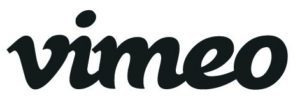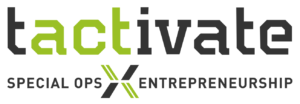I’ve got a handful of last minute speaking spots open at the Streaming Media East show, taking place in NYC next month. Please email me if you’re interested in any of the below round-table positions.
Social Video: Strategies for Success
Tuesday, May 16, 2017
1:45 p.m. – 2:30 p.m.
As TV viewing moves further and further into digital, cable networks and media companies are searching for the best ways to reach audiences online. How do they find digital audiences, and what’s the best way to reach them? A roundtable of media and brand executives will share their strategies for success, using a mixture of organic and paid media to drive results. This session will discuss how data is the key to unlocking the power of social video strategies.
The Business Of Skinny Bundles and Consumer Choice
Tuesday, May 16, 2017
2:45 p.m. – 3:30 p.m.
In recent months, Pay TV carriers and streaming providers like Hulu and YouTube have introduced “skinny bundles” in an effort to prevent cord-cutters and/or attract younger, price conscious consumers. But many of these offerings don’t provide much real choice or only leave providers with slim margins due to high carriage fees. This panel of video industry experts will discuss the latest research on consumer channel priorities and pricing analysis and provide perspectives on what types of bundles consumers want to watch.
OTT Monetization: The Case For Hybrid Models & Quality Advertising
Wednesday, May 17, 2017
1:45 p.m. -2:45 p.m.
With viewers fragmenting across devices and apps, maximizing revenue for OTT services is a big challenge. The emergence of hybrid business models, blending SVOD, TVOD and AVOD, is gaining interest to maximize revenue and give viewers the ability to access content at the price point they prefer. But once you’ve launched multiple services, how can you ensure growth? This panel will discuss how analytics can inform the right business model, what can be done to reduce subscriber churn, and if taking a hybrid approach, how can you be sure one won’t cannibalize the other. And for advertising, specifically, as the ecosystem becomes increasingly intolerant towards fraud and lack of transparency, the panel will discuss how new ad-supported OTT providers should approach their ad operations to be a part of the solution.
The Future of Monetizing TV Online
Wednesday, May 17, 2017
3:15 p.m. -4:00 p.m.
Digital ad rates are insufficient to support quality production, so how will TV online be monetized? Learn from a panel of media executives on how to survive the shift from 30-second ad spots and thrive with ad-blocking consumers. The session will discuss effective ways to measure engagement besides reach and viewing time and how to monetize content distributed across multiple platforms. We’ll also touch on the impact of social media networks on online TV and emerging methods for viewer engagement and loyalty. Come debate where the market is headed for subscription and pay per view monetization of online video.
 It’s been five years since Oculus VR launched their Kickstarter campaign for funding, but the 360 and VR landscape is still evolving, and increasingly fragmented. At the Streaming Media East show in NYC, taking place May 16-17, Sara Poorsatter, Director of Product at Vimeo, will detail how the company is taking the scattered landscape and helping standardize it for creators and audiences; from cameras, to editing tools, to metadata, to player visual language, to distribution platforms. Learn about Vimeo’s goal to help define and promote standards, best practices, introduce/set a new benchmark for quality and offer tools that help creators showcase their content in the intended way – the highest quality possible.
It’s been five years since Oculus VR launched their Kickstarter campaign for funding, but the 360 and VR landscape is still evolving, and increasingly fragmented. At the Streaming Media East show in NYC, taking place May 16-17, Sara Poorsatter, Director of Product at Vimeo, will detail how the company is taking the scattered landscape and helping standardize it for creators and audiences; from cameras, to editing tools, to metadata, to player visual language, to distribution platforms. Learn about Vimeo’s goal to help define and promote standards, best practices, introduce/set a new benchmark for quality and offer tools that help creators showcase their content in the intended way – the highest quality possible.






